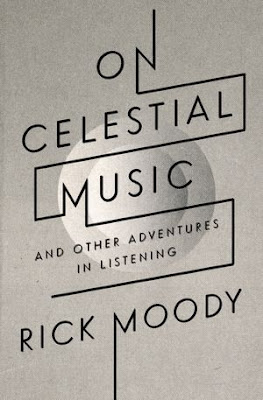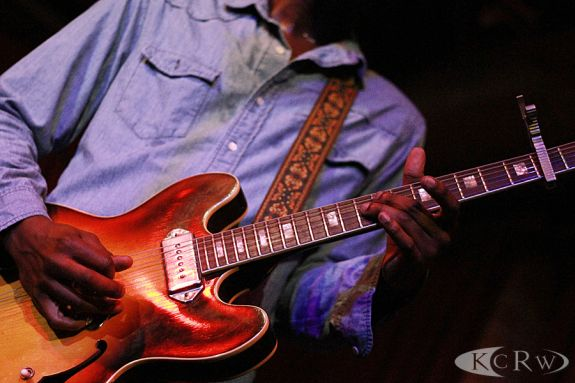Yes, yes, we know, a year-end list. But there’s a reason, yo: The Beast is currently supplementing our writing career with seasonal hours at a local bookstore. So, if you don’t trust our opinion as a “music, etc.” blogger, at least trust a bookseller who fondles…er, peruses new shiny volumes before they even hit the sales floor. Below are the Beast’s annual picks for the 20 best books for the music-obsessed:
Less an autobio than a 21st-century version of Greil Marcus’ Lipstick Traces, How Music Works (McSweeney's) eschews the rote tell-all about David Byrne's life with Talking Heads (although the book’s title could be a lost Heads record circa ‘79) and as a solo journeyman. Instead, he reveals the byways of his absorption a variety of musical influences and intellectual pursuits—from prehistoric bone flutes and MIDI software to pie charts of his album sales and handy tips on creating your own awesome music club. True to Byrne’s (and publisher McSweeney’s) cleverer-than-you form, HMW is paginated backwards.
“If you don’t like this you might like…” Beck Hansen’s hobby-craft project Song Reader (also McSweeney’s), in which L.A.’s cheeky shapesurfer publishes the sheet music to his new album and it’s up to the reader to play them—or at least make fast friends with some musicians. There’s even a website where people have posted their takes on songs like “Mutilation Rag,” “Do We? We Do” and “Now That Your Dollar Bills Have Sprouted Wings.”
We love anything from historian Ted Goia (West Coast Jazz, Delta Blues). His latest, The Jazz Standards, is a compendium of 250 jazz classics like “Tear For Two,” “My Funny Valentine” and “St. James Infirmary”—who wrote them, how they were written, who did the definitive versions of them—was well worth the wait. In many ways, Goia’s book is the grandchild of the underground “fake books” of compiled sheet music that jazz musicians used to carry around with them; reading this book like finally hearing Dylan’s “Basement Tapes,” a public secret being shared with the outside world.
“If you don’t like this you might like…” Jason Weiss’ Always In Trouble (Wesleyan Press) is a long-overdue oral history of Bernard Stollman’s Esperanto Disko (ESP) Records. The pioneering indie label released 125 albums between 1964 and 1975 from everyone from the Lester Bangs-approved trifecta of The Godz, the Fugs and Holy Modal Rounders to free-jazz titans like Albert Ayler, Sun Ra and Gato Barbieri. This read was a particular treat for the Beast, who used to work for an indie jazz label and knows firsthand the daily in(s)anities of keeping a labor of love afloat in a market economy.
Rick Moody and Jonathan Lethem, two award-winning contemporary American white-guy-with-glasses neo-realist writers (see also: Eugenides, Jeff; Chabon, Mike; Franzen, John) who have always weaved rock music into their novels and short stories finally just go for it, non-fiction memoir style in respectively, On Celestial Music (Back Bay) and Fear of Music (Bloomsbury USA). Like their late compatriot David Foster Wallace, they attack their chosen topics from every angle: personal, cultural, political, and a few ways we haven’t found words to describe yet.
A book that boasts the title A Natural History of the Piano (Vintage) has no right to be this slim and brisk. In just 385 pages, pianist/teacher Stuart Isacoff profiles this most orchestral of instruments by following all of the hands who took new styles on its 88 keys, from its 18th-century Florencian inventor Bartolomeo Cristofori through Mozart, Horowitz, Cliburn, Rachmaninoff, Rubenstein, van Cliburn and Oscar Peterson (the author’s obvious fave). It’s like a nonfiction version of E. Annie Proulx’s Accordion Crimes only much less depressing.
“If you don’t like this you might like…” Speaking of accordions, our vote for ‘Best Title’ alongside ‘Best Reconsideration of a Much Maligned Instrument’ is Squeeze This! (University of Illinois Press), in which author Miriam S. Jacobsen essays a rich and storied history of the squeezebox/bellows/concertina/inverted mini-harmonium, from its classical roots in Europe to its embracing by American musicians from N’awlins to East Los Angeles

Who I Am: A Memoir by Pete Townshend (Harper)
On and Off Bass by Mike Watt (Three Rooms Press)
Waging Heavy Peace by Neil Young (Blue Rider Press)
Finally!
Read our 2-part interview with RJ Smith, author of
When a customer asks for an “inspirational biography,” it usually means something in the “Religion” or “Metaphysics” section, but we like to divert them to the ‘Music’ section for Where The Heart Beats (Penguin), art critic Kay Lawson’s handsome volume on the iconic avant-garde composer John Cage. This year, many new and reprinted books have accompanied the 100th anniversary of Cage’s birth, but they haven’t carried Lawson’s with an unusual—and liberating—perspective: the shift in the composer’s musical outlook when he discovered the practice of Zen Buddhism.
Shall We Play That One Together?: The Life and Art of Jazz Piano Legend Marian McPartland by Paul De Barros (St. Martin’s)
The Best of Punk Magazine by John Holmstrom (It Books)
These just came out. The Beast put bar code stickers on both of them and our wrists trembled with the spasm to toss them in our Employee Discount pile (30% off, bay-beeee…) but resisted. We needed to bring them into the light to put their new covers in the ‘Music’ Section. But we checked them out in the break room first and they’ve already held our rapt attention.
How does a song evolve from the mind of its creator to something larger in the popular imagination? And how does four simple notes—da-da-da-DUM—inspire everyone from Ralph Waldo Emerson and Mao Zedong to both the Nazis and the Allies in WWII? In The First Four Notes: Beethoven's Fifth and the Human Imagination (Knopf), Matthew Guerrieri uncovers everything you’d ever want to know about Beethoven’s most famous symphony, from its composition in 1808 to its memorable premiere (a disaster) through its more recent incarnation as a rallying cry for discotheques and cellphone ringtones alike.
“If you don’t like this you might like…” What’s fascinating about this take on a famous song is how it grew to prominence as an anthem only within the last twenty or so years. Alan Light’s The Holy and the Broken (Atria Books) tracks Leonard Cohen’s much-covered acidic lament “Hallelujah” through its many cover versions, finally settling on Jeff Buckley’s definitive 1994 version, which pushed the song into the popular unconscious.
Listen Whitey! The Sound of Black Power, 1965-1975 by Pat Thomas (Fantagraphics)
We Got Power! Hardcore Punk Scenes from 1980s Southern California by David Markey & Jordan Schwartz (Bazillion Points)
What would the holiday season be without arty coffee table-type books? The concepts of power (and exclamation points) to the powerless through collective, grassroots musical action join these two lovely looking volumes. (We’ll ignore the queasy conundrum this bodes. For now.)
And that, my friends, is the Beast’s 365-day series of dispatches from 2012. We’re going dark for one exact month. See ya back here on 1/22/2013.
And that, my friends, is the Beast’s 365-day series of dispatches from 2012. We’re going dark for one exact month. See ya back here on 1/22/2013.



























